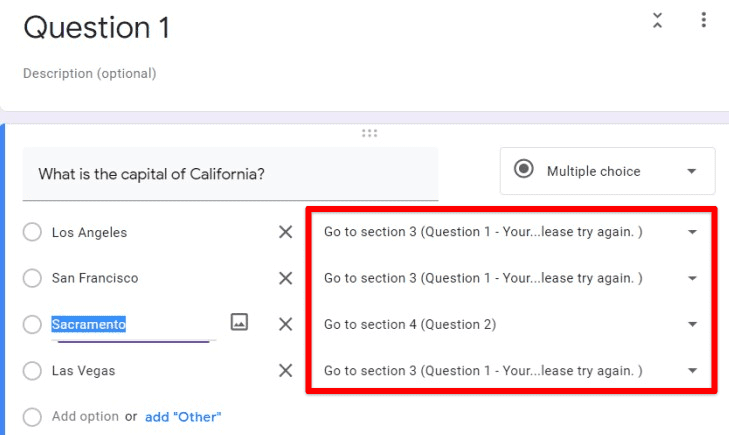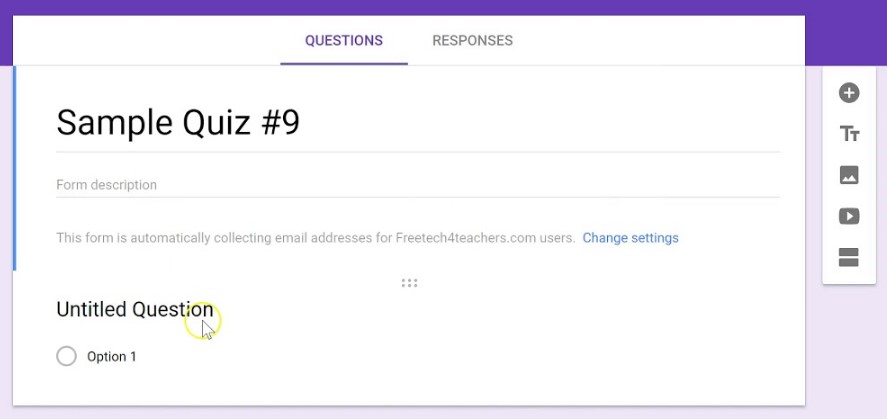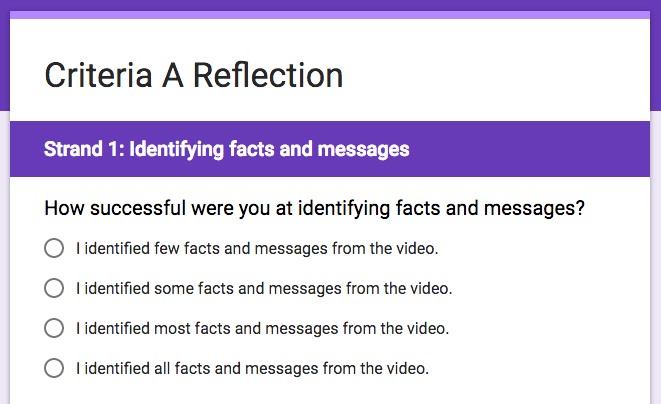Technology has become an increasingly important tool for enhancing student engagement and promoting learning in education. Google Forms, a free web-based tool offered by Google, is one such technology that has gained popularity among educators for its ability to facilitate formative and summative assessments, surveys, and feedback forms. With its user-friendly interface and customizable features, Google Forms can be a powerful tool for teachers to enhance student engagement and promote active learning in the classroom.
This article will explore the benefits of using Google Forms for education and provide tips and best practices for creating effective forms. We will also discuss how Google Forms can promote active learning and provide examples of how it has been successfully implemented in classrooms worldwide.
Why are Google Forms effective for classroom engagement?
Google Forms are a powerful tool for enhancing classroom engagement due to their versatility and ease of use. They are highly customizable, allowing teachers to create forms tailored to their student’s needs and learning objectives. They can be used to create a wide range of assessments, surveys, and feedback forms and can be formatted to include various question types, including multiple-choice, short-answer, and essay questions.
One of the key benefits of using Google Forms in the classroom is the ability to provide students with instant feedback. Responses to quizzes and assessments can be graded automatically, allowing students to see how they performed right away. This can be a powerful motivator for students, as they can see the results of their efforts immediately and make adjustments to their learning strategies if necessary. Google Forms can promote active classroom learning, allowing teachers to create interactive quizzes and polls encouraging student participation and engagement. This can be particularly effective for students who may be shy or hesitant to participate in class discussions. It provides an anonymous platform for them to share their thoughts and ideas.

Google Forms for effective classroom engagement
Forms can save teachers significant time, as they can be used to create and grade assessments quickly and easily. This can free up more time for teachers to focus on other aspects of their teaching practice, such as lesson planning and student support. In addition, Google Forms are accessible from any device with an internet connection, making it easy for students to complete assessments and surveys from home or on the go. This can be particularly useful for students with limited access to classroom resources, as it provides a way to stay engaged in their learning outside the classroom. Educators all around the world look to maximize productivity in their daily routines. Read some tips and tricks for maximizing productivity with Google Forms.
Benefits of Google Forms for education
The benefits of using Google Forms in education include their versatility, automated grading, immediate feedback, customization, accessibility, data collection, and analysis capabilities. Incorporating Google Forms into their teaching practice allows educators to create engaging and interactive assessments and feedback tools that help students stay motivated and engaged.
Versatility: Google Forms can create assessments, surveys, and feedback forms tailored to a teacher’s specific needs and learning objectives. This makes them a highly versatile tool used in various educational contexts.

Versatility
Automated grading: One of the key benefits of using Google Forms is the ability to automate the grading process. Responses to quizzes and assessments can be graded automatically, saving teachers significant time and providing students with immediate feedback on their performance. This can be particularly helpful for large classes or teachers with limited grading time.

Automated grading
Immediate feedback: Google Forms allow teachers to provide students with immediate feedback on their performance, which can be a powerful motivator for students. Students can see how they performed on assessments right away and make adjustments to their learning strategies if necessary. This can also help teachers identify areas where students may need additional support.

Immediate feedback
Customization: Google Forms are highly customizable, allowing teachers to create assessments tailored to their learning objectives. They can include various question types, such as multiple-choice, short-answer, and essay questions, and can be formatted to include visual aids, such as images and videos.

Customization
Accessibility: Google Forms can be accessed from any device with an internet connection, making it easy for students to complete assessments and surveys from home or on the go. This can be particularly useful for students with limited access to classroom resources or who cannot attend class in person.

Accessibility
Data collection and analysis: Google Forms can be used to collect and analyze data on student performance, which can help teachers identify areas where students may need additional support or enrichment. This data can also track student progress and inform instructional decision-making.

Data collection and analysis
Tips for creating effective Google Forms
Creating effective Google Forms requires careful planning and consideration of students’ needs and learning objectives. By using clear and concise language, providing visual aids, using a variety of question types, including feedback, being organized, testing the form, and considering accessibility, educators can create engaging and effective Google Forms that help promote learning and engagement in the classroom.
Using clear and concise language: When creating Google Forms, it’s essential to use clear and concise language that students can easily understand. This includes using simple sentence structures, avoiding technical jargon, and using plain language to explain complex concepts.
Providing visual aids: Visual aids, such as images and videos, can help students understand complex concepts and engage with the material more effectively. When creating Google Forms, consider incorporating visual aids relevant to the material, such as diagrams, charts, and graphs.

Providing visual aids
Using a variety of question types: Using a combination of question types, such as multiple-choice, short answer, and essay questions, can help students engage with the material in different ways and promote a deeper understanding of the material. When creating Google Forms, consider using a mix of appropriate question types for the material being covered.

Using a variety of question types
Including feedback: Providing feedback on students’ responses can be a powerful motivator and help students identify areas where they may need additional support. When creating Google Forms, consider providing feedback on correct and incorrect responses.
Being organized: Organizing Google Forms clearly and logically can help students navigate the material more effectively and understand how the different sections of the form are related. Consider organizing forms into sections or themes and using clear headings and subheadings to guide students through the material.
Testing your form: Before using Google Forms in the classroom, it’s essential to test the form to ensure that it is functioning correctly and that all questions are clear and concise. Consider testing the form on a small group of students or colleagues to get feedback on its effectiveness.

Testing your form
Considering accessibility: When creating Google Forms, it’s crucial to consider accessibility and ensure that the form can be accessed by all students, regardless of any disabilities they may have. Consider using clear and legible fonts, providing alternative text for images and videos, and ensuring that the form can be navigated using assistive technology.
You may have to keep Google Forms anonymous in some educational settings. Luckily, there is a way to do so. You can learn this helpful trick in our recent step-by-step guide.
Using Google Forms to promote active learning
Google Forms can be a powerful tool for promoting active learning in the classroom. Educators can encourage student participation and engagement by using interactive quizzes and polls and create a more dynamic and interactive learning environment.
Interactive quizzes: Google Forms can create interactive quizzes that encourage students to engage with the covered material actively. Educators can promote a deeper understanding of the material and encourage students to think critically about the covered concepts by including various question types, such as multiple-choice, short answer, and essay questions.
Real-time polling: Google Forms can be used to create real-time polls that allow students to provide feedback on the material being covered and engage with the material in a more dynamic way. For example, educators can use Google Forms to ask students to rate their level of understanding of a concept or to provide feedback on the effectiveness of a particular teaching strategy.

Real-time polling
Formative assessments: Google Forms can create formative assessments that allow educators to gauge student understanding of the material and adjust their teaching strategies accordingly. Using Google Forms to provide immediate feedback on students’ responses, educators can identify areas where students may need additional support and adjust their teaching strategies accordingly.
Collaborative learning: Google Forms can promote collaborative learning by allowing students to collaborate on quizzes and assessments. Educators can encourage collaboration and promote a more interactive learning environment by creating quizzes requiring students to work in pairs or groups.

Collaborative learning
Gamification: Google Forms can be used to create interactive quizzes and assessments that incorporate game-like elements, such as point systems, leaderboards, and badges. By gamifying the learning experience, educators can promote student engagement and motivation and create a more dynamic and interactive learning environment.
Examples of Google Forms in education
Google Forms can be used in various ways in education to enhance classroom engagement and promote learning. From formative assessments and real-time polling to feedback surveys and student reflections, there are many ways educators can use Google Forms to enhance the learning experience for their students. Here are some examples of how Forms can be employed in different scenarios,
Quizzes and exams: Google Forms can create quizzes and exams that allow educators to test student knowledge and understanding of the covered material. For example, educators can use Google Forms to create a multiple-choice, short answer, and essay questions that test students’ knowledge of a particular concept or skill.

Quizzes and exams
Feedback surveys: Google Forms can create surveys that allow students to provide feedback on their learning experience. For example, educators can use Google Forms to ask students about their level of engagement with the material being covered, the effectiveness of teaching strategies, and any areas where they may need additional support.
Student reflections: Google Forms can create reflections allowing students to reflect on their learning experience and identify areas where they may need additional support. For example, educators can use Google Forms to ask students to reflect on their understanding of a particular concept or skill, the effectiveness of teaching strategies, and any areas where they may need additional support.

Student reflections
Peer evaluations: Google Forms can create peer evaluations that allow students to evaluate their peers’ work and provide feedback. For example, educators can use Google Forms to create evaluations that ask students to provide feedback on their peers’ projects, presentations, or essays.
Classroom management: Google Forms can manage various classroom tasks, such as attendance tracking, assignment submissions, and parent-teacher conferences. For example, educators can use Google Forms to create attendance tracking forms, assignment submission forms, and parent-teacher conference request forms.
Conclusion
With its ability to create quizzes, surveys, assessments, and other forms of feedback, Google Forms can help educators better understand their students’ understanding and adjust their teaching strategies accordingly. They can promote active learning, encourage student participation, and streamline classroom management tasks. To create effective Google Forms, it is essential to use clear and concise language, provide visual aids, and use multiple question types. Do you have to conduct quizzes regularly? Learn a lot by reviewing our comprehensive guide on creating a quiz in Google Forms.
